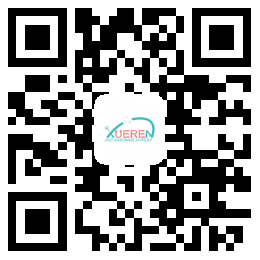- Español
- Português
- русский
- Français
- 日本語
- Deutsch
- tiếng Việt
- Italiano
- Nederlands
- ภาษาไทย
- Polski
- 한국어
- Svenska
- magyar
- Malay
- বাংলা ভাষার
- Dansk
- Suomi
- हिन्दी
- Pilipino
- Türkçe
- Gaeilge
- العربية
- Indonesia
- Norsk
- تمل
- český
- ελληνικά
- український
- Javanese
- فارسی
- தமிழ்
- తెలుగు
- नेपाली
- Burmese
- български
- ລາວ
- Latine
- Қазақша
- Euskal
- Azərbaycan
- Slovenský jazyk
- Македонски
- Lietuvos
- Eesti Keel
- Română
- Slovenski
- मराठी
- Srpski језик
Types of RFID
2020-04-25

Low Frequency
- General Frequency Range: 30 - 300 kHz
- Primary Frequency Range: 125 - 134 kHz
- Read Range: Contact - 10 Centimeters
- Average Cost Per Tag: $0.75 - $5.00
- Applications: Animal Tracking, Access Control, Car Key-Fob, Applications with High Volumes of Liquids and Metals
- Pros: Works well near Liquids & Metals, Global Standards
- Cons: Very Short Read Range, Limited Quantity of Memory, Low Data Transmission Rate, High Production Cost

High Frequency
- Primary Frequency Range: 13.56 MHz
- Read Range: Near Contact - 30 Centimeters
- Average Cost Per Tag: $0.20 - $10.00
- Applications: DVD Kiosks, Library Books, Personal ID Cards, Poker/Gaming Chips, NFC Applictions
- Pros: NFC Global Protocols, Larger Memory Options, Global Standards
- Cons: Short Read Range, Low Data Transmission Rate

Ultra-High Frequency
- General Frequency Range: 300 - 3000 MHz
- Primary Frequency Ranges: 433 MHz, 860 - 960 MHz

There are two types of RFID that reside within the Ultra High Frequency range: Active RFID and Passive RFID.
Active RFID
- Primary Frequency Range: 433 MHz, (Can use 2.45 GHz - under the Extremely High Frequency Range)
- Read Range: 30 - 100+ Meters
- Average Cost Per Tag: $25.00 - $50.00
- Applications: Vehicle Tracking, Auto Manufacturing, Mining, Construction, Asset Tracking
- Pros: Very Long Read Range, Lower Infrastructure Cost (vs. Passive RFID), Large Memory Capacity, High Data Transmission Rates
- Cons: High Per Tag Cost, Shipping Restrictions (due to batteries), Complex Software may be Required, High Interference from Metal and Liquids; Few Global Standards
Passive RFID
- Primary Frequency Ranges: 860 - 960 MHz
- Read Range: Near Contact - 25 Meters
- Average Cost Per Tag: $0.09 - $20.00
- Applications: Supply Chain Tracking, Manufacturing, Pharmaceuticals, Electronic Tolling, Inventory Tracking, Race Timing, Asset Tracking
- Pros: Long Read Range, Low Cost Per Tag, Wide Variety of Tag Sizes and Shapes, Global Standards, High Data Transmission Rates
- Cons: High Equipment Costs, Moderate Memory Capacity, High Interference from Metal and Liquids
Primary Subsets of Passive RFID
The relatively wide range of 860 - 960 MHz is recognized as the ‘Global Standard’ for UHF Passive RFID; however, its late adoption led to the range being further divided into two primarily subsets – 865 – 868 MHz and 902 - 928 MHz.
865 - 868 MHz - ETSI
The European Telecommunications Standards Institute (ETSI) is the governing body in Europe that sets and upholds country-wide standards for communicating via multiple channels, including Radio Waves. By ETSI’s regulations, RFID equipment and tags are only allowed to communicate on the smaller frequency range of 865 - 868 MHz because other types of radio communications are allocated to subsets of the larger range of 860 - 960 MHz.
Because ETSI sets the standards for Europe, but when purchasing tags and equipment, the standard can be called either ETSI or EU denoting Europe.
902 - 928 MHz - FCC
The Federal Communications Commission (FCC) is the governing body in the United States that sets and upholds country-wide standards for communicating via multiple channels including Radio Waves. The FCC regulations state that RFID tags and equipment can only operate between 902 - 928 MHz, because, like Europe, other communication types are allocated to the remaining portions of the larger range of 860 - 960 MHz.
RFID Equipment or Tags that are FCC certified or on the North American Frequency Range, or NA, can be used throughout North America.




